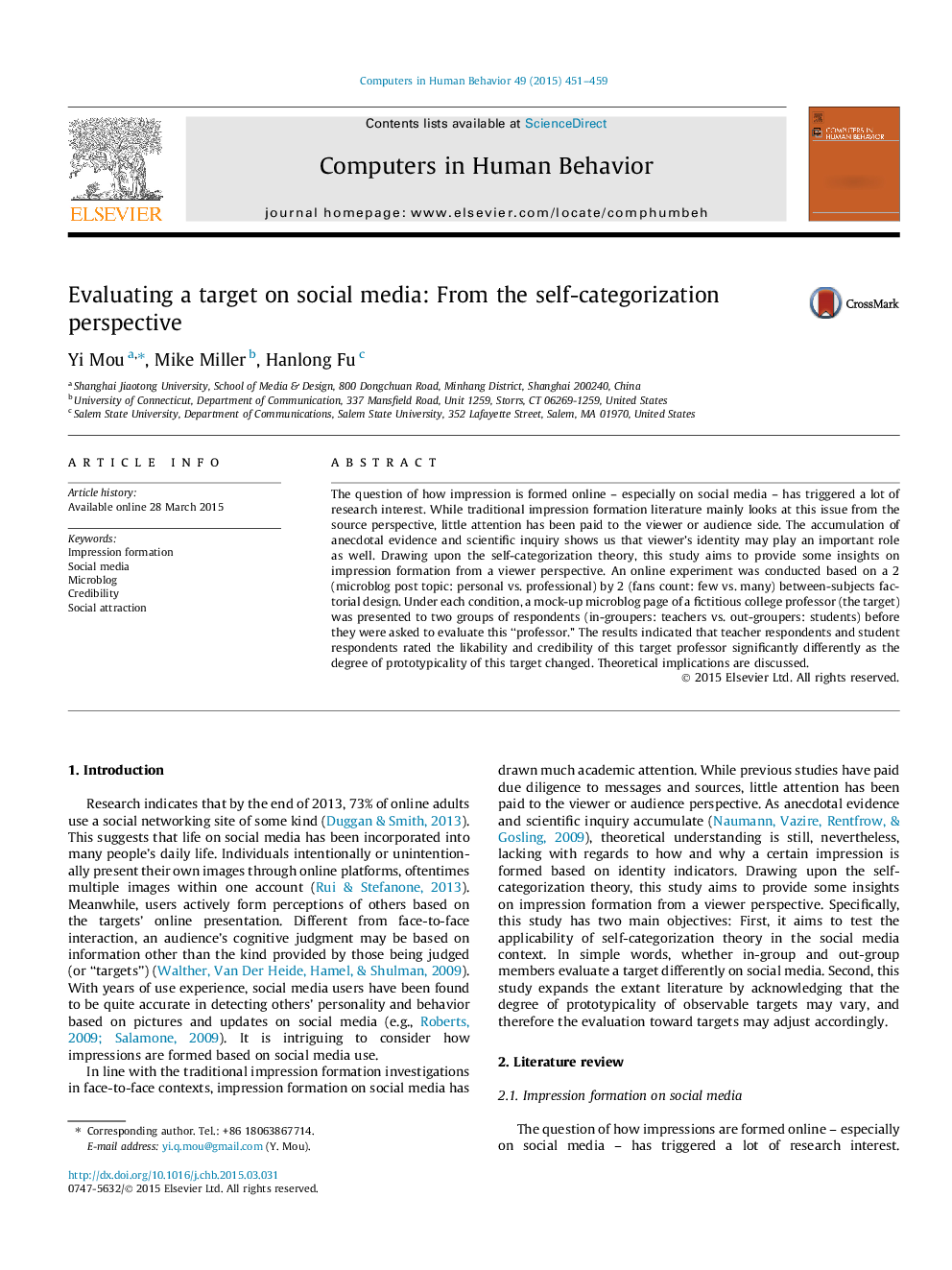| Article ID | Journal | Published Year | Pages | File Type |
|---|---|---|---|---|
| 350344 | Computers in Human Behavior | 2015 | 9 Pages |
•Impression formation on social media from viewer perspective has been examined.•In a 2 × 2 online experiment, respondents were asked to evaluate a target.•In-groupers evaluated the prototypical target more favorably than out-groupers.•Different groups of respondents paid varying degrees of attention to social cues.
The question of how impression is formed online – especially on social media – has triggered a lot of research interest. While traditional impression formation literature mainly looks at this issue from the source perspective, little attention has been paid to the viewer or audience side. The accumulation of anecdotal evidence and scientific inquiry shows us that viewer’s identity may play an important role as well. Drawing upon the self-categorization theory, this study aims to provide some insights on impression formation from a viewer perspective. An online experiment was conducted based on a 2 (microblog post topic: personal vs. professional) by 2 (fans count: few vs. many) between-subjects factorial design. Under each condition, a mock-up microblog page of a fictitious college professor (the target) was presented to two groups of respondents (in-groupers: teachers vs. out-groupers: students) before they were asked to evaluate this “professor.” The results indicated that teacher respondents and student respondents rated the likability and credibility of this target professor significantly differently as the degree of prototypicality of this target changed. Theoretical implications are discussed.
